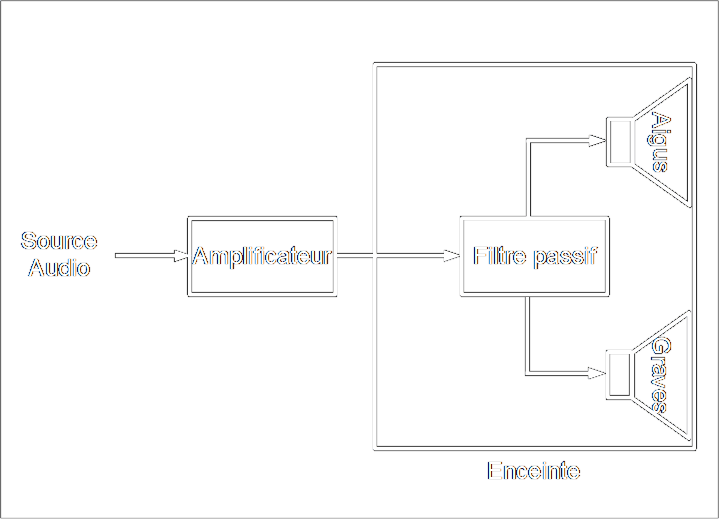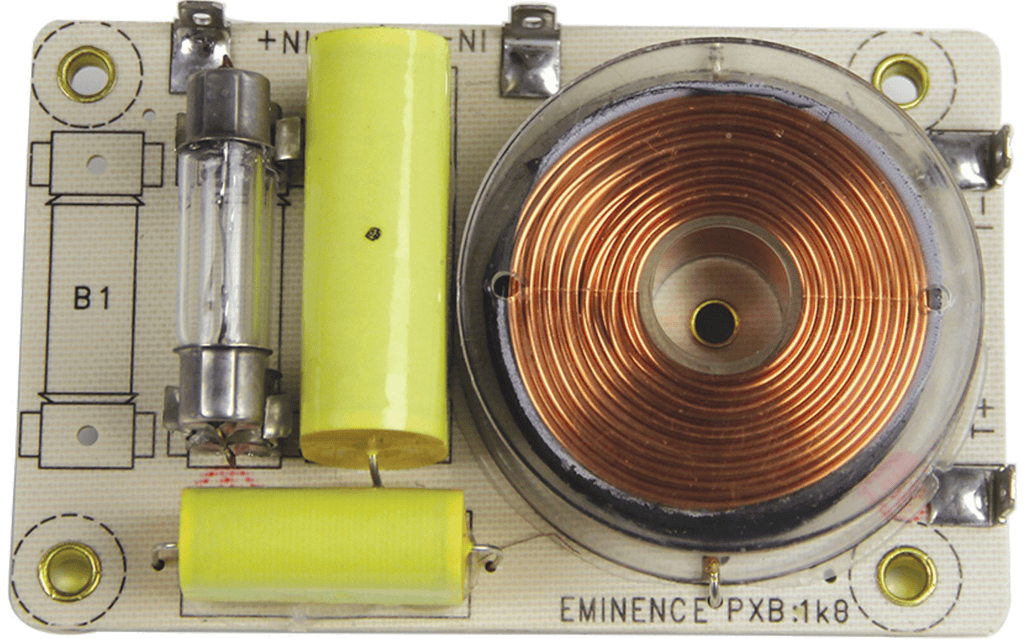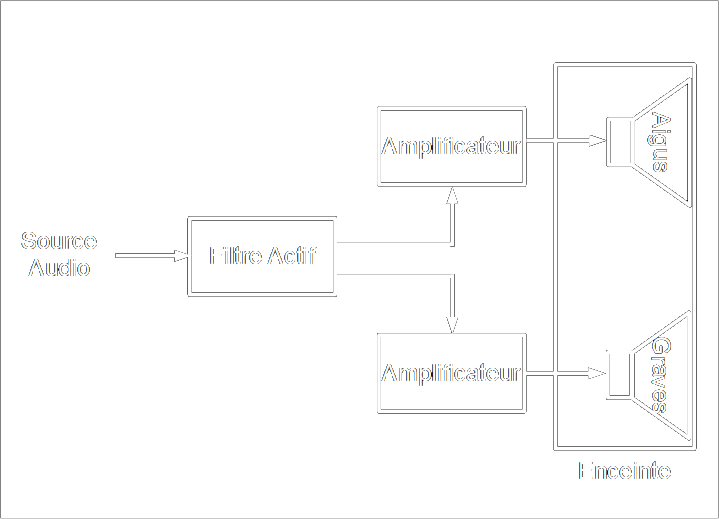Understanding the differences between active and passive filtering
You’ve probably heard of active and passive filtering. But what exactly are they? And how do you choose between the two for your sound system? In this article, I will try to explain to you what is the fundamental difference between active and passive crossovers, the different types of active and passive speakers and how to choose for your sound system.
I will also explain the advantages and disadvantages of each type of filtering and some use cases.
What is filtering ?
The operation of filtering, in the field of sound reinforcement, consists mainly of modifying the audio signal by removing certain frequencies or attenuating them.
In general, filters are used so that each loudspeaker receives only the frequencies that are within its operating range (for example, if a tweeter receives low frequencies, it may be damaged very quickly).
For studio or ‘artistic’ use, they can also be used to adapt the sound to the environment, to taste, or to modify the timbre of instruments or a voice for example.
As explained in the article on the functioning of a sound system, the filter is one of the master pieces that will “separate” an audio signal into different frequency bands.
Active filtering VS Passive filtering
In electronics, an active circuit is a circuit that uses active components such as transistors, amplifiers and integrated circuits to amplify or modify a signal.
Active circuits need a power supply, whereas passive circuits do not need a power supply. It is because they are powered that they can amplify the signal.
A passive circuit is a circuit that contains only passive components such as resistors, capacitors and inductors to modify a signal. Passive circuits cannot amplify a signal, but they can modify it in terms of frequency, phase, etc.
Passive circuits, on the other hand, cannot amplify the signal, only “decrease” its amplitude at certain frequencies. In the end, it is more like an attenuator….
How active filtering works
In sound-systems, active crossover means that the crossovers (active ones, that is!) are placed before the amplifiers. The amplifiers are then connected directly to the speakers.

The source is wired into the crossover, which is wired to the amp and then to the speakers.
As usual, the aim is obviously for the speakers to receive only the frequencies they “need”. So we will filter the frequencies and send only those that are “useful” to the amplifier, which in turn will feed the speakers with only those frequencies.

How passive filtering works
With passive filtering, the source is connected directly to the amplifier, which amplifies the entire sound spectrum in the speaker. The loudspeaker is usually equipped with a circuit board with electronic components that perform the crossover function (passive, i.e. without power supply).

This stage will perform the “separation” of frequencies directly in the speaker, attenuating the frequencies that are not useful.
This type of crossover is often found in Hi-Fi or low power speakers.

Advantages and disadvantages of each type of filtering
Advantages of active filtering :
- More efficient than passive filtering (no power dissipation “for nothing”)
- Can be adjusted to adapt to changes in equipment, speakers (especially if it is a digital processor)
- Allows you to fine-tune the amplification of each section, and therefore of each loudspeaker
Disadvantages of active filtering :
- More expensive than passive crossover (one amp per crossover band)
- Requires more power cables (because more amps)
- Can be more complex to implement (although …. )
Advantages of passive filtering :
- Less expensive than active filtering (cables, amps, …)
- Takes up less space as it is integrated directly into the speaker
Disadvantages of passive filtering :
- Less efficient than active filtering
- Lack of flexibility, impossible to adjust the frequencies or adapt the filtering in case of change of configuration, speakers, etc.
- Dissipates amplification power to attenuate and filter out unnecessary frequencies at each speaker. The greater the power, the more the crossover must be dimensioned to support and dissipate this power… It is therefore rare to see a passive crossover when the powers involved are high.
How to choose between active and passive filtering for your sound system
Most often, for public address use, a passive crossover is used for low power (often the midrange or treble) which contains two speakers that do not operate at the same frequency.
You can also use them for safety reasons, for example on the treble, to protect the speakers against wiring errors. I’ll explain this later 😉
Some use cases
Active Filtering + Passive Filtering
It is perfectly possible to use an active crossover for one part of the sound system and a passive crossover for the other. As I said before, passive crossovers are almost never used on subs.
An example of a configuration could be, in the case of a 3-way system
- For midrange and treble: commercially available two-way passive speakers with an internal passive crossover.
- For bass: a home-made speaker cabinet with active filtering.
100% active filtering
This is what I recommend because of the flexibility of adjustment that it brings.
Here, we are in the 100% active case, so one active filter (or Digital Processor) and one amp per channel.
Security” filtering
I think it is also a good idea to add this setup, especially for the more fragile speakers. The idea is that low frequencies are very poorly tolerated by the tweeters.
So we add a passive high-pass filter in the tweeter box to make sure that, even in case of a wiring or setting error, the speaker is protected against frequencies that could damage it.
The rest of the setup is the same as for 100% active.
Conclusion
In summary, active filtering offers better control over settings and greater flexibility, but requires additional equipment and is therefore more expensive.
Passive filtering is simpler and less expensive, but does not allow any post-tuning and is very limited for high power applications. Finally, I strongly recommend 100% active crossover, with some small passive crossovers to protect the most fragile speakers!
Thanks for reading, I hope this article was helpful !
🙏 If you enjoyed, please share on your social networks 🙏
And if you have any remarks, thoughts, experiences or argument to share :
Feel free to share in the comments below !




